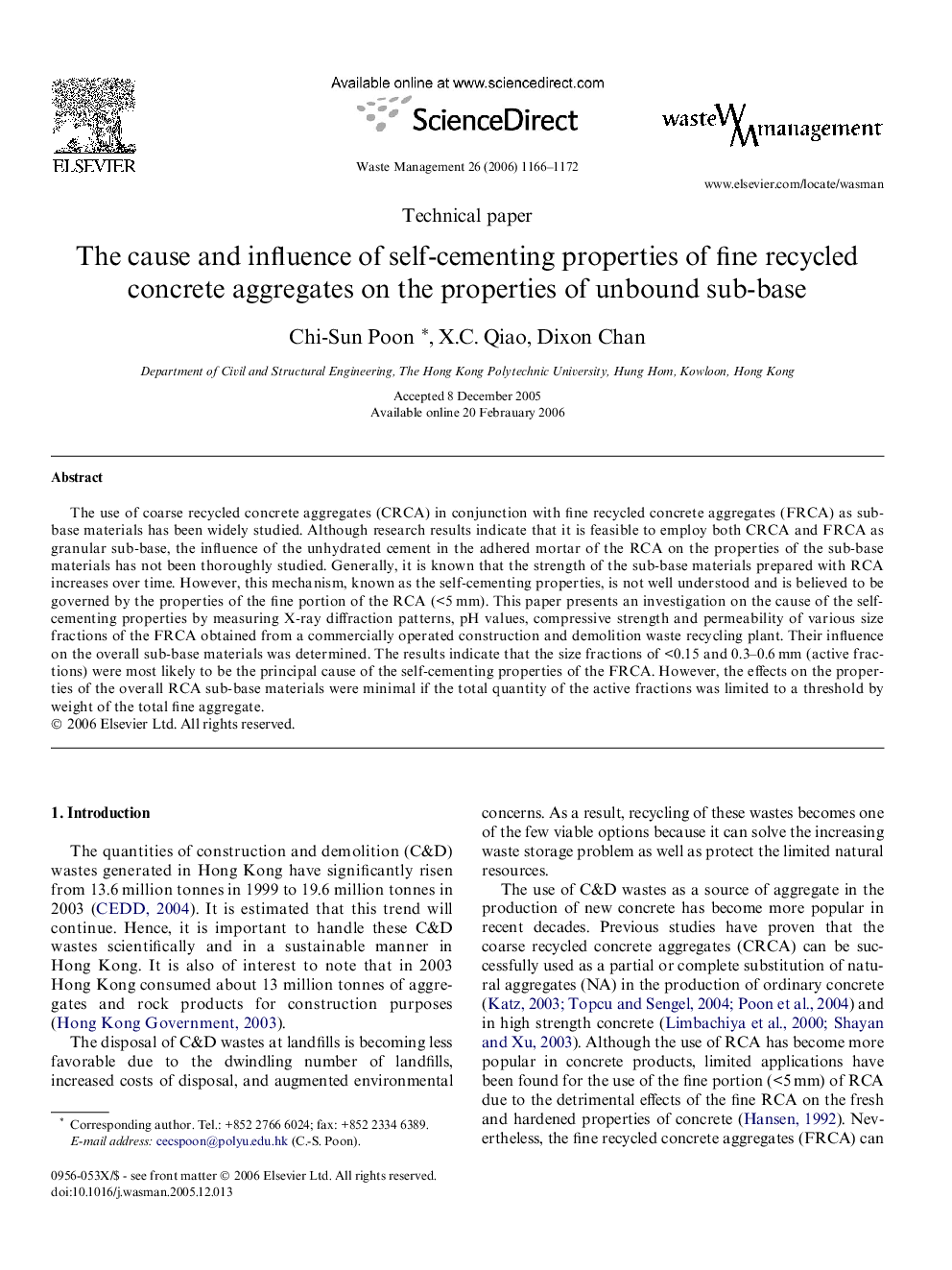| Article ID | Journal | Published Year | Pages | File Type |
|---|---|---|---|---|
| 4473874 | Waste Management | 2006 | 7 Pages |
The use of coarse recycled concrete aggregates (CRCA) in conjunction with fine recycled concrete aggregates (FRCA) as sub-base materials has been widely studied. Although research results indicate that it is feasible to employ both CRCA and FRCA as granular sub-base, the influence of the unhydrated cement in the adhered mortar of the RCA on the properties of the sub-base materials has not been thoroughly studied. Generally, it is known that the strength of the sub-base materials prepared with RCA increases over time. However, this mechanism, known as the self-cementing properties, is not well understood and is believed to be governed by the properties of the fine portion of the RCA (<5 mm). This paper presents an investigation on the cause of the self-cementing properties by measuring X-ray diffraction patterns, pH values, compressive strength and permeability of various size fractions of the FRCA obtained from a commercially operated construction and demolition waste recycling plant. Their influence on the overall sub-base materials was determined. The results indicate that the size fractions of <0.15 and 0.3–0.6 mm (active fractions) were most likely to be the principal cause of the self-cementing properties of the FRCA. However, the effects on the properties of the overall RCA sub-base materials were minimal if the total quantity of the active fractions was limited to a threshold by weight of the total fine aggregate.
